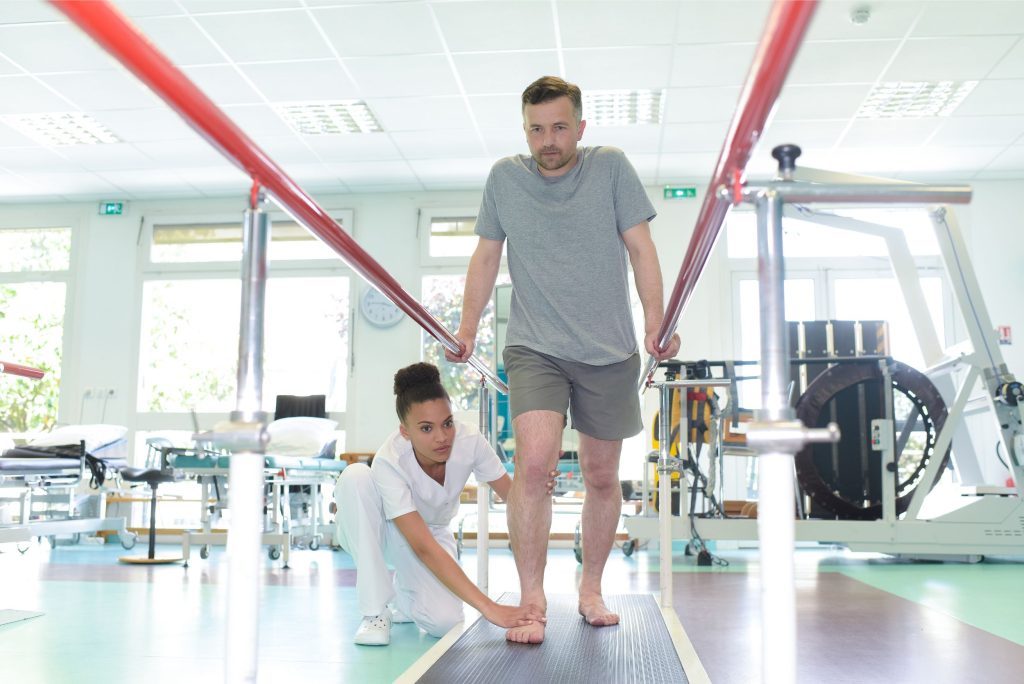
Physical therapists are essential in maintaining and improving day-to-day mobility, from helping patients recover from injuries to providing treatments for chronic conditions. But what exactly does a day in the life of a physical therapist look like? How is it different from other medical professionals?
In this article, we’ll explore the various tasks they must complete on a typical day—from evaluating and diagnosing patient conditions to creating individualized treatment plans and providing hands-on therapy—as well as some of the unique challenges of being a physical therapist. Finally, we’ll take an inside look at how these professionals manage to handle it all with grace and efficiency.
Overview of a Day in the Life of a Physical Therapist

A day in the life of a physical therapist is filled with different responsibilities, tasks, and challenges. It is important to note that no two days are alike for this profession, as every day brings new cases to treat and manage.
The Morning
The day typically begins with physical therapists evaluating patient conditions, taking notes, and reviewing past medical history. They must also prepare treatment plans, discuss these with the patient and their families, and decide how best to proceed with therapy.
The Afternoon
The afternoon is often spent providing hands-on physical therapy for patients. Depending on the individual case, this may include stretching exercises, massage, ultrasound, or other treatments. Physical therapists must also be able to educate patients about their day-to-day activities, such as how to correctly use a cane or walker and proper ergonomics for office chairs and desks.
Conclusion of the Day
At the end of the day, physical therapists are responsible for documenting patient progress, communicating with families and other healthcare professionals, filing reports, and keeping up-to-date on the latest research in their field.
With so many different tasks to complete, physical therapists must be incredibly organized, efficient, and compassionate—all necessary to provide the best care possible.
Creating Individualized Treatment Plans

Creating individualized treatment plans is an important part of a physical therapist’s day. Physical therapists must analyze the patient’s current abilities, medical history and condition, and the desired outcomes of treatment to create a plan that meets the specific goals needed to treat patients.
This includes selecting appropriate exercises and activities to improve strength, flexibility, balance, and coordination. This can also include pain relief techniques and assigned patient load.
The physical therapist must also ensure that the patient has proper safety and technique when performing each exercise to reduce the risk of further injury or strain. Proper documentation is a key part of this process, as it helps track progress over time and allows for quick adjustments to the treatment plan if necessary.
Specific Conditions
When creating a personalized physical therapy plan, a physical therapist needs to consider unique aspects of a patients condition. This is especially important for a spinal cord-injured patient or for a plan that treats stroke patients
Creating an individualized plan that treats stroke patients requires a thorough understanding of a stroke’s effects and its potential long-term impacts. Physical therapists should be aware that a stroke can affect physical abilities and sensory processing, impairing the affected side’s strength, balance, coordination, and movement.
For a spinal cord-injured patient, physical therapists must create a treatment plan tailored to the individual’s deficits and abilities. This includes looking at the range of motion, muscle strength, coordination, and balance.
Unique Challenges Faced by Physical Therapists

Physical therapists face a variety of unique challenges in their day-to-day lives. One of the primary challenges is staying up to date with the latest advancements in physical therapy techniques and treatments.
As technology advances, so do the methods used to help patients improve their quality of life. Physical therapists must be willing and able to learn new techniques and treatments to ensure they are providing their patients with the best care possible.
Another challenge physical therapists face is working with various patient populations, from injury rehabilitation to long-term disability management. Physical therapists must be able to quickly assess each patient’s needs and develop an individualized treatment plan designed for that specific patient. They must also be able to communicate effectively with each patient and their families to ensure the best possible outcome.
Time Management in the Physical Therapy Profession
Time management is a third challenge physical therapists face on a day-to-day basis. They must ensure that they are efficiently utilizing their time so that all of their patients receive the necessary care while still having enough time left over for tasks like filing paperwork.
Entry-level Physical Therapists
Entry-level physical therapists face a unique set of challenges, as they must not only learn the basics of their profession but also develop the skills necessary to provide effective treatments and care for their patients.
Time management is perhaps one of the most important skills an entry-level physical therapist will need, as they must efficiently utilize their day to care for all their patients.
Additionally, entry-level physical therapists must also be able to remain flexible and adjust their treatment plans to meet the changing needs of each individual patient. Lastly, entry-level physical therapists must develop strong communication and interpersonal skills as they will be dealing with various people daily.
Private Practices
Private practice physical therapists often face a unique set of challenges different from their peers in a clinical setting. All private practice physical therapists must be well-versed in business and marketing skills as they are responsible for providing quality patient care and growing and sustaining their own businesses. These tasks include finding clients, managing finances, and advertising the practice.
Private practice physical therapists must also be able to handle various patient populations, from day-to-day injury management and rehabilitation to providing ongoing care for conditions such as spinal cord injuries or stroke patients. Physical therapists in private practice must be willing and able to develop individualized treatment plans for each patient, incorporating both traditional and innovative techniques.
Evaluating Patient Conditions

Evaluating patient conditions is one of the most important aspects of a day in the life of a physical therapist. Whether meeting with a new patient for the first time or following up with an existing client, physical therapists must assess patients to accurately diagnose any musculoskeletal issues and plan an effective treatment.
Physical therapists begin by asking questions and gathering information about a patient’s health history, activity levels, and previous injuries. They also take note of any physical limitations or impairments the person may have. Throughout the assessment process, a physical therapist will pay attention to how the patient moves and performs exercises and their strength and range of motion.
The physical therapist will use a variety of tests to evaluate the patient’s condition, such as muscle strength testing, gait analysis, and joint mobility assessment. By performing all of these assessments, the physical therapist can pinpoint any underlying issues and develop an appropriate physical therapy treatment plan that best fits the individual’s needs.
Daily Work in Physical Therapy

A typical day in the life of a physical therapist is full of unique challenges, from staying up to date with advancements in technology and treatments to working with different patient populations.
Physical therapists must also be proficient at evaluating patients’ conditions to create individualized treatment plans that meet each person’s needs. Time management is another critical skill for physical therapists as they strive to efficiently utilize their time while providing quality care for every patient.
With these skills and knowledge under their belt, physical therapists can help people improve their health and live better lives. Check out our recent blog to learn about the job outlook for physical therapists!
